Fruits For Glowing Skin: 20 Top Picks For A Radiant Complexion
Healthy and radiant skin is just one step away – just eat some delicious fruits!
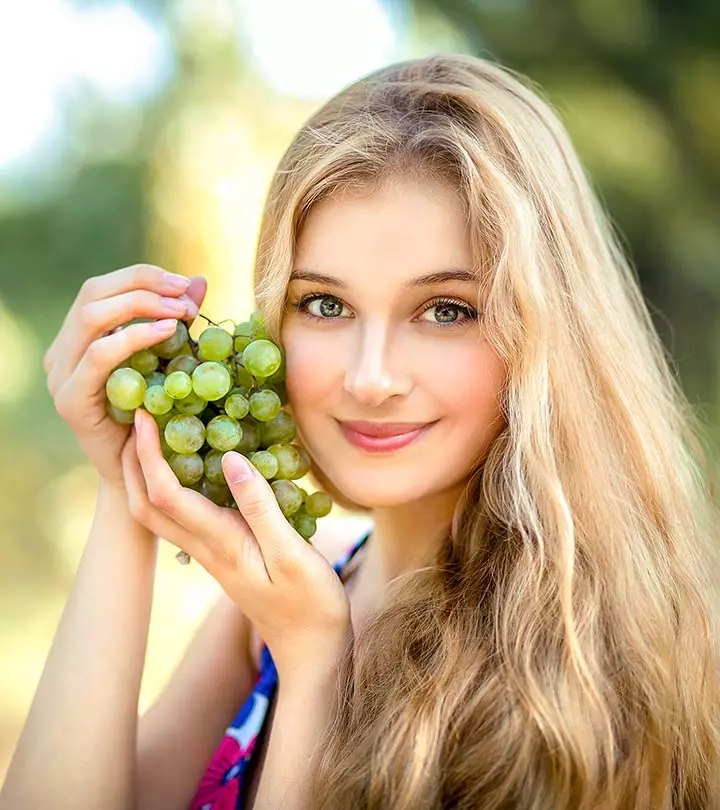
Image: ShutterStock
The journey to glowing skin starts with proper nourishment. Skincare products can only fix your skin from the outside. For that ‘lit-from-within’ glow, you need to include key vitamins and minerals in your diet. And the easiest way is to consume vitamin-rich fruits for a glowing complexion.
Fruits have an abundance of vitamins, minerals, and antioxidants that can keep your skin cells healthy and aid with intense hydration. Moreover, you can also use fruit masks on your face every alternate day for that added glow. Scroll through this article to know which fruit is good for your skin and can give you glowing skin, how to add them to your diet, and use them as natural remedies or topically apply them to improve your skin health.
In This Article
How Do Your Eating Habits Affect Your Skin?


Your skin health is directly related to your daily diet. A diet high in processed foods, sugars, and simple carbohydrates can harm your skin. Without adequate fresh fruits and vegetables, you may experience premature aging, acne and acne scars, and even dry skin. You could be missing out on nutrients like zinc, iron, copper, and vitamins A and D that may promote skin health.
Most of the nutrients crucial for skin health are available in fruits. In the next section, we will look at the top 20 skin-whitening foods that can boost your skin health and keep it glowing.
Key Takeaways
- Lemons are rich in vitamin C, a strong antioxidant that helps drain out impurities and protects the skin from photodamage and hyperpigmentation.
- Papayas have enzymes with antibacterial, antifungal, and antiviral effects and help prevent skin damage caused by free radicals.
- To reap maximum benefits, include the fruits in your daily diet and apply them to your skin.
- However, if you don’t eat enough fresh fruits, you may get accelerated aging, acne and acne scars, as well as dry skin.
Top 20 Fruits For Glowing Skin
These fruits are among the top foods for healthy skin. Each fruit has different benefits—some keep your skin hydrated, others support collagen production, and some help reduce inflammation. Knowing how they work can help you choose the suitable fruits to add to your diet and skincare for healthier, glowing skin.
1. Lemon
Lemons are natural bleaching agents. They are rich in vitamin C, a potent antioxidant that helps flush out toxins and protects the skin from photodamage and hyperpigmentation (1). So, if you have uneven pigmentation, dark spots, acne scars, or keratinizationi The process where the top layer of skin cells acquires keratin and attains a corn-like structure, manifesting as dry, hard skin patches. , try using lemon to get glowing skin. Here is how you can use it.
Antioxidants in lemons help get glowing skin. However, the antioxidant activity of lemon juice is also influenced by the degree of ripening. A study compares the antioxidant activity of unripe, half-ripe, and ripe lemon by a DPPH (1,1-diphenyl-2- picrylhydrazyl) free radical inhibition test and shows that highest antioxidant activity is noted in the unripe stage of lemon.
Mary Grace Amparo, a blogger, shared the beauty and health benefits of lemons in her blog. After infusing lemon in her regular drinks, she said, “My skin appears healthier, I become more lively, and I seldom catch a cold (i).” She also explored lemon’s versatility, using it as a facial toner, facial wash/scrub add-on, and facial mask, noting positive outcomes such as tightened skin and reduced breakouts.

Influence Of Degree Of Ripening On Antioxidant Activity In Lemon Juice
Source: Biochemical Characteristics and Antioxidant Properties of Citrus Juice from Lemon (Citrus limon), Lime (Citrus aurantifolia) and Grapefruit (Citrus paradisi) as Influenced by Degree of RipeningHow To Use
a. In Your Diet
- Add lemon juice to your salad.
- Add the juice of ½ lemon and 1 teaspoon of organic honey to a glass of water and drink it first thing in the morning. This will help flush out toxins.
b. On Your Skin
- For oily skin with pigmentation or acne scars, mix lemon juice with rose water and dab it on your skin and rinse off after 10 minutes.
- For dry skin with pigmentation, mix lemon juice and coconut oil, dab it on your skin, and rinse off after 10 minutes.
- To get rid of dark circles, mix 1 tablespoon of lemon juice with 1 teaspoon of milk. Apply it to your under-eye area and rinse off gently after 10 minutes.
- Rub lemon and sugar on the keratinized areas to lighten the skin tone and reduce keratinization.
 Quick Tip
Quick Tip2. Papaya
Papayas contain vitamins A, C, B, pantothenic acid, and folate, and minerals such as copper, potassium, and magnesium.
They also contain enzymes like papain and chymopapain that help prevent skin damage by free radicals and have antibacterial, antifungal, and antiviral properties. Consuming papaya can help prevent constipation, which is one of the causes of poor skin health. It can also help treat warts, eczema, corns, and cutaneous tubercles (2). Scientists have also found that papaya can help heal wounds and chronic skin ulcers (3), (4). So, if you have digestive issues, scars, and pigmentation, you must include papaya in your diet and beauty regimen. Here how to use it.
How To Use
a. In Your Diet
- Eat a bowl of papaya for breakfast or as an evening snack.
- You can prepare a papaya smoothie by blending papaya, lemon juice, and pink Himalayan salt.
b. On Your Skin
- Mash a small piece of papaya and apply it to your skin. Rinse off after 10 minutes.
- Mix mashed papaya with lemon juice and ¼ teaspoon of turmeric and apply it to the pigmented and scarred areas. Rinse off after 10 minutes.
- For dry and flaky skin, apply mashed papaya with half a teaspoon of almond oil. Wipe it away with a soft wet cloth after 10 minutes.
- Make a papaya scrub using a small piece of papaya, 1 teaspoon of orange peel, and 1 tablespoon of rose water (for oily skin) or honey (for dry skin). Use gentle circular motions to scrub your skin. Rinse with room temperature water.
3. Avocado
Avocado is rich in healthy fats, dietary fiber, and vitamins E, A, C, K, B6, niacin, folate, and pantothenic acid. It has antioxidant properties that help reduce oxidative damage, which, in turn, prevent DNA damage. Consuming avocado can promote healthy aging as it is rich in lutein and zeaxanthin that protect your skin from UV radiation. The healthy fats in avocados help retain skin elasticity, reduce inflammation, and speed up wound healing (5). Here how you can use avocado to get clear and flawless skin.
How To Use
a. In Your Diet
- Add avocado to your salad, burritos, wraps, breakfast bowl, sandwiches, etc.
- Make an avocado and spinach smoothie.
- Prepare an avocado dip by mixing it with yogurt or hummus.
- Use avocado in cakes or as a topping.
b. On Your Skin
- Mash an avocado and apply it to your skin. Rinse off after 10 minutes.
- For oily skin, mash a small piece of avocado with rose water and a pinch of camphor. Rinse off after 10 minutes.
4. Orange

The sweet, juicy, and pulpy orange has a vibrant color and intoxicating smell. This fruit can also work wonders for your skin. Like lemons, oranges too are rich in vitamin C, and 100 grams of oranges contain 54 milligrams of vitamin C, which is an antioxidant. Oranges can help prevent oxidative damage, photodamage, DNA damage, reduce inflammation, and aid collagen synthesis (6), (7).
How To Use
a. In Your Diet
- Consume half an orange each day.
- Drink freshly pressed orange juice with the pulp. Avoid the pulp if you have stomach ulcers or are suffering from IBS/IBDi Irritable Bowel Syndrome or Irritable Bowel Disease, a gastrointestinal disorder with common symptoms like diarrhea, gas, and bloating. .
- Add oranges to your salad, pizza, stew, cakes, and chocolates.
- Add orange juice to your smoothie.
b. On Your Skin
- Apply orange juice topically wherever you have pigmentation. Rinse off after 10 minutes.
- For oily skin, mix 3 tablespoons of orange juice, 1 teaspoon of lemon juice, 2 tablespoons of gram flour, and ½ teaspoon of turmeric. Apply as a pack.
- For dry skin, mix 3 tablespoons of orange juice, 1 teaspoon of lemon juice, 1 teaspoon of milk, ½ teaspoon of turmeric, and 1 teaspoon of honey. Apply to your skin.
5. Watermelon
Red, fleshy, watery, sweet, and refreshing we just cannot get enough of watermelon. It is great for oily and acne-prone skin. Watermelon has dietary fiber (0.4%), water (92%), carbs (7.55%), sugar (0.4%), vitamins C, A, B1, and B6, carotenoids, flavonoids, and lycopene. It has zero fat and is cholesterol-free (8). Lycopene helps in scavenging the free oxygen radicals and prevents skin damage (9). The water helps flush out toxins and improves bowel movement.
How To Use
a. In Your Diet
- Have a medium bowl of watermelon for breakfast or as an afternoon snack.
- Drink freshly made watermelon juice in the morning or evening.
- Make a fruit salad with watermelon.
- Add watermelon to your smoothie for that extra zing.
b. On Your Skin
- Mash a watermelon and apply it to your skin. Rinse off after 10 minutes.
- For oily skin, mix 3 tablespoons of watermelon juice, 1 tablespoon of lime juice, 1 tablespoon of Fuller’s earth, and 1 teaspoon of rose water. Rinse with cold water after the mask dries.
- For dry skin, mix 3 tablespoons of watermelon juice, 1 tablespoon of lime juice, 1 teaspoon of honey, and 1 teaspoon of aloe vera. Rinse off after 10 minutes.
6. Cucumber
Cucumbers are also very high in water content. They have a cooling effect on the body and possess antioxidant properties (10). Unpeeled cucumbers are also rich in vitamins K and C and dietary fiber. Scientists have found that sea cucumbers can be used for reducing wrinkles (11).
How To Use
a. In Your Diet
- Add cucumber to your salads, wraps, sandwiches, smoothies, etc.
- Prepare a glass of refreshing pulpy cucumber juice and add a dash of lime juice, roasted cumin powder, and pink Himalayan salt for taste and flavor.
- Eat a cucumber as a snack in the evening.
b. On Your Skin
- Grate a cucumber and mix it with 1 tablespoon of gram flour and 1 teaspoon of rose water to reduce inflammation on acne-prone skin.
- Mix the grated cucumber, 1 tablespoon of milk, and 1 teaspoon of coconut oil to moisturize dry skin.
- Mix the grated cucumber, 1 tablespoon of lime juice, and sugar to scrub your hands and feet.
7. Mango
Mangoes are rich in vitamins A, E, C, and K, flavonoids, polyphenolics, beta-carotene, and xanthophylls. They help protect your skin from DNA damage and inflammation (12). They are also rich in sugar and dietary fiber, which help treat constipation. In fact, mangoes are already used in the cosmetic industry to create hair and skin butter that have shown wound healing properties (13).
How To Use
a. In Your Diet
- Add mango to your smoothie, breakfast bowl, or fruit salad.
- Include freshly cut mangoes in your daily diet.
b. On Your Skin
- Mash a small piece of mango and apply it all over your skin. Rinse off after 10 minutes.
- For oily skin, mix mango, rosewater, and lime juice and apply it to your skin. Wash with cold water after 10 minutes.
- For dry skin, apply a mask of mashed mango, 1 teaspoon of yogurt, and 1 teaspoon of honey. Wash with room temperature water after 10 minutes.
8. Pomegranate
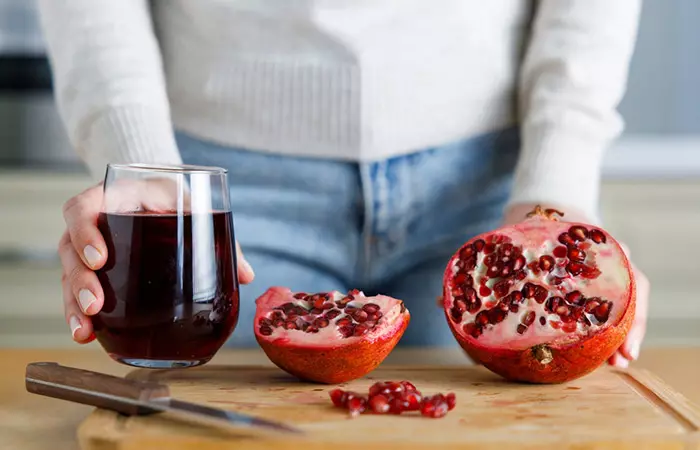
Pomegranates are rich in vitamins C, K, and folate, and minerals like calcium, magnesium, phosphorus, and potassium (14). In fact, the peel, the membrane, and the edible seeds of the fruit are loaded with antioxidants (ellagic acid) that help protect the skin from UV-A and UV-B damage and skin pigmentation (15), (16), (17). Scientists were also successful in regenerating the human dermisi The second layer of the skin that comprises the excretory glands, hair follicles, nerves, blood vessels, and connective tissue and epidermisi The outermost visible layer of the skin that protects the body and keeps the skin hydrated. in the laboratory using pomegranate (18).
How To Use
a. In Your Diet
- Add it to your salad, hummus, baba ganoush, juice, smoothie, cakes, smoothies, breakfast bowl, or fruit salad.
b. On Your Skin
- You can mash pomegranate seeds and apply the juice all over the affected area. Wash it off after 10 minutes.
- Make a face pack with 1 tablespoon of gram flour, 1 teaspoon of Fuller’s earth, 1 teaspoon of lime juice, and 2 tablespoons of pomegranate juice to treat pigmentation on oily skin.
- If you have dry skin, instead of adding Fuller’s earth, add milk or honey to the above mask.
9. Banana
Banana is rich in dietary fiber, vitamins A, C, K, E, and folate, and minerals such as potassium, calcium, phosphorus, and magnesium (19). It is a very good natural moisturizer and has antioxidant and antimicrobial properties (20), (21).
How To Use
a. In Your Diet
- Add a banana to oatmeal for breakfast.
- Add a banana to your smoothie or breakfast bowl.
- You can prepare banana muffins or banana bread.
b. On Your Skin
- Apply mashed banana all over your skin to make it soft and supple instantly.
10. Apple
Apples are rich in vitamins A and C, dietary fiber, potassium, calcium, and magnesium (22). They have antioxidant properties and help scavenge the harmful free oxygen radicals. The peel of the apple has also been found to be rich in antioxidants (23).
How To Use
a. In Your Diet
- Eat one apple per day as part of a healthy snack with some nuts.
- Add apple slices to your breakfast bowl, oatmeal, or cornflakes.
- Add apple to your smoothie or make apple juice.
- Add apple to your baby spinach and tuna salad.
- Add apples to your cake batter.
b. On Your Skin
- Grate one apple and apply it to your skin. Rinse after 10 minutes.
- For dry skin, mix grated apple with 1 teaspoon of honey and apply it to your skin. Wash it off with warm water after 10 minutes.
11. Gooseberry
Gooseberry or amla is loaded with vitamin C (24). It has antioxidant properties. Gooseberries also have anti-inflammatory and wound healing properties. They also soothe the GI tracti The gastrointestinal tract that comprises the organs involved in the intake, assimilation, absorption, and excretion of food (25). They also promote procollageni The precursor molecule that is involved in the production of collagen through a series of reactions. production (26).
How To Use
a. In Your Diet
- Chop seeded gooseberries and dry them in the sun. Store them in a glass jar. Pop one or two pieces of dried gooseberries in your mouth after lunch every day.
- You can make gooseberry juice and store it in the fridge.
- Add gooseberry pieces to your smoothie or juice.
12. Strawberries

If your skin is acne-prone, Here some good news. You can simply eat or apply strawberries to get clear skin. Strawberries are a great source of vitamin C and alpha-hydroxy acid (also known as salicylic acid). Salicylic acid is used in creams for acne treatment as it penetrates the skin pores and cleans them. Strawberries also contain ellagic acid that protects the skin from UV radiation and prevents collagen destruction and wrinkle formation (27).
How To Use
a. In Your Diet
- Add strawberries to your breakfast bowl.
- Add strawberries to your morning smoothie.
- Halve the strawberries and add them to a salad.
- Add them to cakes or muffins.
b. On Your Skin
- Mash a strawberry and apply it to your skin. Wash off with cold water after 10 minutes.
13. Kiwi
For those of you with panda eyes, kiwi is a savior! Kiwis contain a good amount of vitamin C and help protect the skin from the free oxygen radicals that cause DNA damage (28). Kiwis also promote collagen synthesis and help prevent wrinkles (29).
How To Use
a. In Your Diet
- You can blend a kiwi with spinach and grapefruit to make a yummy morning smoothie.
- Just blend a kiwi and add 1 teaspoon of honey to it to enjoy a soothing juice.
- Peel and slice a kiwi and eat it as an evening snack.
- Add chopped kiwi to a salad.
b. On Your Skin
- Mash a kiwi and apply it to your skin. Wash off after 10 minutes.
- Mash a kiwi and add ½ a teaspoon of turmeric and apply it to hydrate and lighten your skin.
14. Apricot
Apricots are rich in vitamins A, C, K, and folate (30). They are also loaded with dietary fiber that helps improve bowel movement. And lastly, researchers found that apricots can help prevent endothelial cell deathi The death of the cells lining the inside of the blood vessels is caused by infections, oxidative stress, or other trigger factors. (31).
How To Use
a. In Your Diet
- Chop apricots and add to your juice, smoothie, or breakfast bowl.
- Add apricots to your salad, pie, tarts, jams, and jelly.
- Have 2 to 3 apricots as an evening snack.
b. On Your Skin
- Thinly slice an apricot and apply the slices to the pigmented area of your skin. Remove them after 10 minutes.
15. Grapes
Grapes, red or green, are loaded with resveratrol, an antioxidant. Researchers have found that resveratrol helps protect the skin from UV damage and skin cancer (32). Grapes are also a rich source of vitamins C, K, and folate, and minerals such as calcium, potassium, and phosphorus (33). Grape seed extract has skin-rejuvenating, -protecting, and -healing properties (34), (35).
How To Use
a. In Your Diet
- Consume a small bowl of grapes.
- Add grapes to your morning smoothie.
- Add sweet and red grapes to chicken stew to give it a sweet edge.
- Add grapes to your breakfast bowl.
- Add grapes to your fruit salad.
b. OnYour Skin
- Mash grapes and apply them to your skin. Wash off with cold water after 10 minutes.
16. Peach

Peaches are rich in vitamins A, C, E, and K, and minerals such as calcium, magnesium, potassium, phosphorus, and dietary fiber (36). They are also a great source of antioxidants that help scavenge the free oxygen radicals, thereby preventing DNA damage and photodamage (37).
How To Use
a. In Your Diet
- Add peach slices to your breakfast bowl.
- Make peach juice or smoothie.
- Add peaches to your dessert.
b. On Your Skin
- Thinly slice the peach and place the slices all over your skin. Remove the slices after 10 minutes and wipe your face with a wet cloth.
17. Cherries
Sweet, red, and delicious, cherries are not only good to taste, but they also have the ability to repair and protect your skin from damage. They are rich in vitamin C and minerals like calcium, magnesium, potassium, and phosphorus (38). Cherries also have antioxidant and anti-inflammatory properties that may help prevent skin damage (39). Here how you can use cherries to get flawless skin.
How To Use
a. In Your Diet
- Have a small bowl of cherries in the morning or evening.
- Chop cherries and add them to your salad.
- Add cherries to a small bowl of yogurt or custard.
b. On Your Face
- Mash a cherry and apply it to your skin. Rinse off after 10 minutes.
18. Muskmelon
Muskmelon is rich in dietary fiber, vitamins A, C, K, and folate, and minerals such as potassium, magnesium, phosphorus, and calcium (40). Muskmelon has anti-inflammatory and antioxidant properties (41). These anti-inflammatory properties may help in the treatment of psoriasis (42).
How To Use
a. In Your Diet
- Add muskmelon to a bowl of fruit salad.
b. On Your Skin
- Apply mashed muskmelon to your skin. Wash it off after 10 minutes.
- Mash a muskmelon and add grape juice and 2 to 3 drops of lime juice to it. Apply it to your skin to help treat uneven pigmentation.
19. Pineapple
The sweet and tangy pineapples are rich in dietary fiber, vitamin C, and minerals like calcium, potassium, and phosphorus (43). Pineapples contain an enzyme called bromelain, which has anti-inflammatory, anticancer, and wound healing properties (44) (45). Applying pineapple to burnt human skin may help remove the dead skin cells and speed up the process of healing (46).
How To Use
a. In Your Diet
- Consume a small bowl of pineapple for breakfast or as an evening snack.
- Toss pineapple with spinach, cucumber, pomegranate, and cilantro to make a delicious salad.
- Add pineapple to your dessert.
- Add pineapple to pizza, wraps, burritos, stews, etc.
 Quick Tip
Quick Tipb. On Your Skin
- Mix pineapple juice with 1 teaspoon of milk and apply it to your skin. Wash off after 10 minutes.
20. Prunes
Prunes are dried plums. They have high fiber content and are rich in vitamins A, K, and niacin, and minerals like calcium, magnesium, and potassium (47). The fiber in prunes helps prevent constipation. Constipation may also cause acne in some cases (48). Scientists have found that prune juice can help increase the weight of stool and improve bowel movement (49).
How To Use
a. In Your Diet
- Drink 4 oz. prune juice first thing in the morning.
- Add prune juice to your morning smoothie.
b. On Your Skin
- Apply prune juice to your skin and wash it off after 10 minutes.
- Mix 1 tablespoon of prune juice, 1 teaspoon of lemon juice, and 1 teaspoon of rosewater and apply it to your skin. Wash off after 10 minutes.
While consuming these fruits may help boost skin flow, what quantity should you stick to on a daily basis? We have discussed the same in the next section.
How Much Fruit Should You Eat Per Day?
The ideal amount of fruit to consume per day depends on one’s age, gender, activity level, and dietary needs. However, guidelines recommend a daily intake of about 5 servings of 80 grams of fruits and vegetables every day (50).
This recommendation is founded on the understanding that consuming fruits and vegetables daily is associated with a reduced risk of heart disease, stroke, and cancer (51).
Note that these studies encompass both fruits and vegetables. Assuming that half of these servings comprise fruits, their recommended daily intake may be about two servings.
Infographic: Most Easily Available Fruits For Glowing Skin
Makeup can only conceal your skin issues on the outside. To reduce your skin problems you need to fix your skin health from within. Getting glowing skin requires a lot of care in diet and food habits. Check out the infographic below to know which are the most readily available fruits to achieve radiant skin.
Some thing wrong with infographic shortcode. please verify shortcode syntax
If you are wondering about which fruit is good for skin whitening, these are all the 20 fruits that may aid in developing healthy, beautiful skin. Make sure to include these fruits in your regular diet to reap all of their advantages. Moreover, if you like them in liquid form, grinding them to make healthy detox juices for glowing skin is also a good option. You may also apply fruit masks on your face every other day to boost radiance. Finally, try working out at least three times a week and eating a healthy diet if you want to speed up the healing process for your skin. It takes time to get the relevant results, but it will all be worth it if you stick with it.
Frequently Asked Questions
Which fruit gives instant glow?
In truth, no fruit can give instant glow. However, several fruits such as pomegranate, papaya, lemon, avocado and watermelon are some of the most popular fruits that are applied topically to achieve radiant skin.
What should I avoid for glowing skin?
It is advisable to avoid smoking, alcohol, caffeine, fried and processed foods, and refined sugar if you want to achieve glowing skin as these are considered to be harmful for skin health.
Can certain fruits worsen skin conditions like acne?
Yes, anecdotal evidence suggests that overconsumption of fruits with a high glycemic index like mango, prunes, and bananas may worsen acne in some people. These fruits may cause blood sugar spikes, which may increase sebum production and skin inflammation, potentially worsening acne. However, further studies are warranted to support this claim.
Are there any interactions between certain fruits and medications that I should be aware of?
Yes, studies suggest that grapefruit may interact with calcium channel blockers and benzodiazepines by inhibiting certain enzymes in the liver, which may reduce its potency (52). Also, fruits high in vitamin K like pomegranate may interact with blood-thinning medications like warfarin (53). Consult a certified doctor to know about any specific interactions between the fruits and your medications.
Can consuming fruits cause or worsen skin conditions like eczema or psoriasis?
Yes, consumption of citrus fruits and berries may trigger flare-ups or worsen the symptoms of eczema (54). Some people may be sensitive to the histamines found in strawberries, bananas, and citrus fruits, which may cause an allergic reaction (55). Consult your doctor to understand which fruits should be included in your diet.
Illustration: Fruits For Glowing Skin
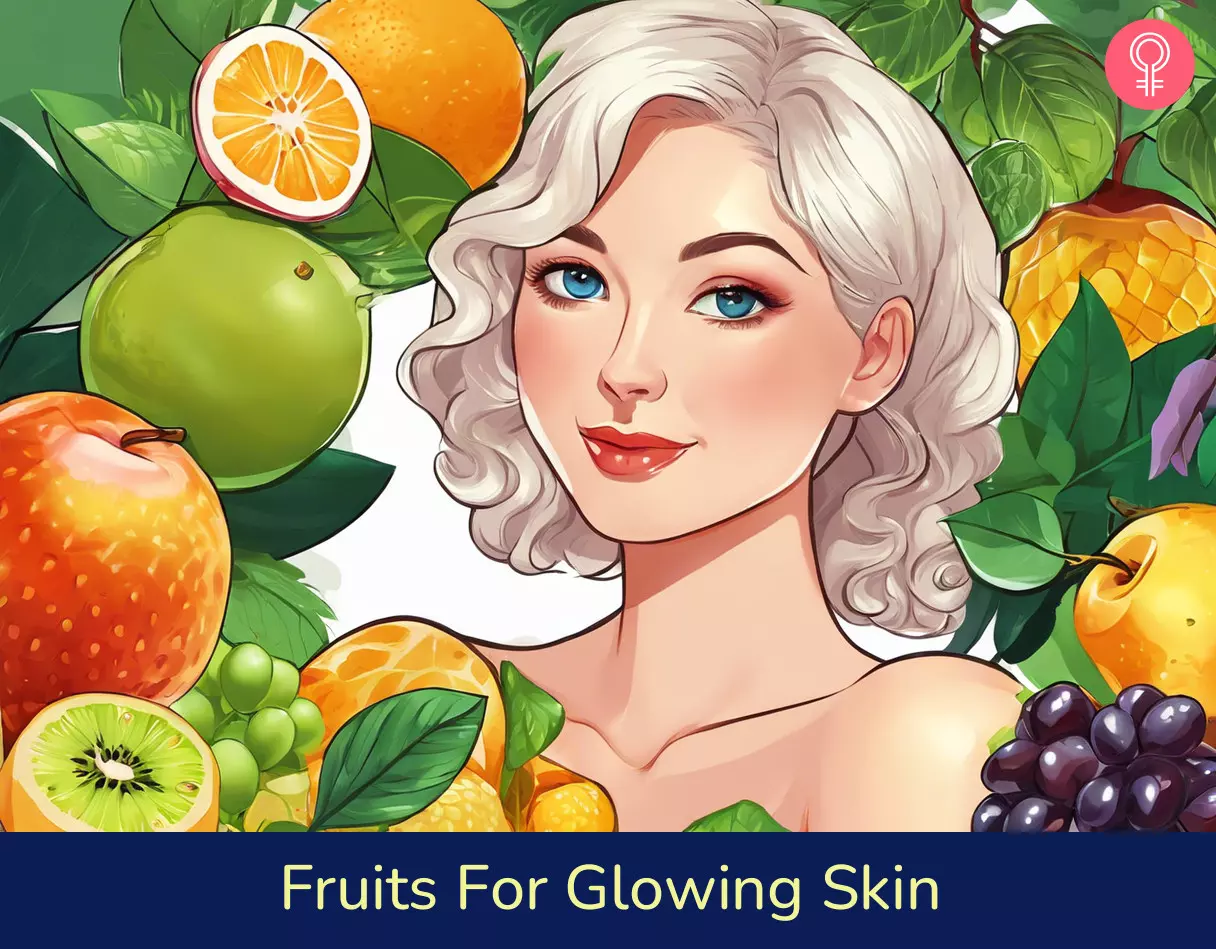
Image: Stable Diffusion/StyleCraze Design Team
Do you know which are the top five fruits for healthy and glowing skin? Watch the video below for expert tips on consuming or using these fruits in your skin care routine for a gorgeous inner radiance.
Personal Experience: Source
StyleCraze's articles are interwoven with authentic personal narratives that provide depth and resonance to our content. Below are the sources of the personal accounts referenced in this article.
i. LEMON is my wonder fruit!https://missgdiaries.blogspot.com/2015/04/b-diary-2-lemon-is-my-wonder-fruit.html
References
Articles on StyleCraze are backed by verified information from peer-reviewed and academic research papers, reputed organizations, research institutions, and medical associations to ensure accuracy and relevance. Read our editorial policy to learn more.
-
- Vitamin C in dermatology
https://www.ncbi.nlm.nih.gov/pmc/articles/PMC3673383/ - Traditional and Medicinal Uses of Carica papaya
https://www.plantsjournal.com/archives/?year=2013&vol=1&issue=1&part=A&ArticleId=5 - Antibacterial effects of Carica papaya fruit on common wound organisms
https://pubmed.ncbi.nlm.nih.gov/15040064/ - Topical use of papaya in chronic skin ulcer therapy in Jamaica
https://pubmed.ncbi.nlm.nih.gov/10786448/ - Hass Avocado Composition and Potential Health Effects,
https://www.ncbi.nlm.nih.gov/pmc/articles/PMC3664913/ - Vitamin C in dermatology
https://www.ncbi.nlm.nih.gov/pmc/articles/PMC3673383/ - Effect of orange juice intake on vitamin C concentrations and biomarkers of antioxidant status in humans,
https://pubmed.ncbi.nlm.nih.gov/12936929/ - Watermelon lycopene and allied health claims,
https://www.ncbi.nlm.nih.gov/pmc/articles/PMC4464475/ - The Role of Phytonutrients in Skin Health,
https://www.ncbi.nlm.nih.gov/pmc/articles/PMC3257702/ - Phytochemical and therapeutic potential of cucumber,
https://pubmed.ncbi.nlm.nih.gov/23098877/ - Skin whitening and anti-corrugation activities of glycoprotein fractions from liquid extracts of boiled sea cucumber,
https://pubmed.ncbi.nlm.nih.gov/27794379/ - Mangifera Indica (Mango),
https://www.ncbi.nlm.nih.gov/pmc/articles/PMC3249901/ - Formulation and Evaluation of Exotic Fat Based Cosmeceuticals for Skin Repair,
https://www.ncbi.nlm.nih.gov/pmc/articles/PMC2792546/ - Pomegranate nutrition data,
https://fdc.nal.usda.gov/fdc-app.html#/food-details/169134/nutrients - A Comprehensive Review of Punicagranatum (Pomegranate) Properties in Toxicological, Pharmacological, Cellular and Molecular Biology Researches,
https://www.ncbi.nlm.nih.gov/pmc/articles/PMC3832175/ - Protective effects of standardized pomegranate (Punica granatum L.) polyphenolic extract in ultraviolet-irradiated human skin fibroblasts
https://pubmed.ncbi.nlm.nih.gov/18717570/ - Effects of oral administration of ellagic acid-rich pomegranate extract on ultraviolet-induced pigmentation in the human skin,
https://pubmed.ncbi.nlm.nih.gov/17190110/ - Pomegranate as a cosmeceutical source: pomegranate fractions promote proliferation and procollagen synthesis and inhibit matrix metalloproteinase-1 production in human skin cells,
https://pubmed.ncbi.nlm.nih.gov/16221534/ - Bananas – nutrition data
https://fdc.nal.usda.gov/fdc-app.html#/food-details/173944/nutrients - Antioxidant activity and protective effect of banana peel against oxidative hemolysis of human erythrocyte at different stages of ripening,
https://pubmed.ncbi.nlm.nih.gov/21369778/ - Detection of antimicrobial activity of banana peel (Musa paradisiaca L.) on Porphyromonas gingivalis and Aggregatibacter actinomycetemcomitans: An in vitro study,
https://www.ncbi.nlm.nih.gov/pmc/articles/PMC4678547/ - Apples – nutrition data,
https://fdc.nal.usda.gov/fdc-app.html#/food-details/168202/nutrients - Antioxidant activity of apple peels,
https://pubmed.ncbi.nlm.nih.gov/12537430/ - Chemical and antioxidant evaluation of Indian gooseberry (Emblica officinalis Gaertn., syn. Phyllanthus emblica L.) supplements,
https://pubmed.ncbi.nlm.nih.gov/19172666/ - Amla (Emblica officinalis Gaertn), a wonder berry in the treatment and prevention of cancer,
https://pubmed.ncbi.nlm.nih.gov/21317655/ - Amla (Emblica officinalis Gaertn.) extract promotes procollagen production and inhibits matrix metalloproteinase-1 in human skin fibroblasts
https://pubmed.ncbi.nlm.nih.gov/18588964/ - A Pilot Study of the Photoprotective Effects of Strawberry-Based Cosmetic Formulations on Human Dermal Fibroblasts,
https://www.ncbi.nlm.nih.gov/pmc/articles/PMC4581226/ - Kiwifruit protects against oxidative DNA damage in human cells and in vitro,
https://pubmed.ncbi.nlm.nih.gov/11588897/ - . Kiwi fruit (Actinidia chinensis L.) polysaccharides exert stimulating effects on cell proliferation via enhanced growth factor receptors, energy production, and collagen synthesis of human keratinocytes, fibroblasts, and skin equivalents,
https://pubmed.ncbi.nlm.nih.gov/15389574/ - Apricots – nutrition data,
https://fdc.nal.usda.gov/fdc-app.html#/food-details/171697/nutrients - Apricot Melanoidins Prevent Oxidative Endothelial Cell Death by Counteracting Mitochondrial Oxidation and Membrane Depolarization,
https://www.ncbi.nlm.nih.gov/pmc/articles/PMC3493606/ - The Grape Antioxidant Resveratrol for Skin Disorders: Promise, Prospects, and Challenges
https://www.ncbi.nlm.nih.gov/pmc/articles/PMC3060966/ - Grapes – nutrition data
https://fdc.nal.usda.gov/fdc-app.html#/food-details/173040/nutrients - The topical effect of grape seed extract 2% cream on surgery wound healing
https://pubmed.ncbi.nlm.nih.gov/25948437/ - Grape seed proanthocyanidines and skin cancer prevention: Inhibition of oxidative stress and protection of immune system
https://www.ncbi.nlm.nih.gov/pmc/articles/PMC2562900/ - Peach – nutrition data
https://fdc.nal.usda.gov/fdc-app.html#/food-details/169928/nutrients - Antioxidant potential of peels and fleshes of peaches from different cultivars
https://pubmed.ncbi.nlm.nih.gov/19857078/ - Cherries – nutrition data
https://fdc.nal.usda.gov/fdc-app.html#/food-details/2346399/nutrients - Cherry antioxidants: from farm to table,
https://pubmed.ncbi.nlm.nih.gov/20944519/ - Muskmelon – nutrition data,
https://fdc.nal.usda.gov/fdc-app.html#/food-details/2344722/nutrients - Antioxidant and anti-inflammatory properties of a Cucumis melo LC. extract rich in superoxide dismutase activity,
https://pubmed.ncbi.nlm.nih.gov/15261965/ - Diet In Dermatology: Present Perspectives,
https://www.ncbi.nlm.nih.gov/pmc/articles/PMC2965901/ - Pineapple – nutrition data
https://fdc.nal.usda.gov/fdc-app.html#/food-details/2346398/nutrients - Potential role of bromelain in clinical and therapeutic applications
https://www.ncbi.nlm.nih.gov/pmc/articles/PMC4998156/ - Bromelain, the enzyme complex of pineapple (Ananas comosus) and its clinical application. An update,
https://pubmed.ncbi.nlm.nih.gov/3287010/ - Bromelain,
https://www.nccih.nih.gov/health/bromelain - Prunes – nutritional data,
https://fdc.nal.usda.gov/fdc-app.html#/food-details/168162/nutrients - Acne vulgaris, probiotics and the gut-brain-skin axis – back to the future?,
https://www.ncbi.nlm.nih.gov/pmc/articles/PMC3038963/ - Systematic review: the effect of prunes on gastrointestinal function
https://pubmed.ncbi.nlm.nih.gov/25109788/ - Increasing Fruit and Vegetable Consumption: Challenges and Opportunities
https://www.ncbi.nlm.nih.gov/pmc/articles/PMC3831687/ - Fruit and vegetable consumption and mortality from all causes, cardiovascular disease, and cancer: systematic review and dose-response meta-analysis of prospective cohort studies
https://www.bmj.com/content/349/bmj.g4490 - An Overview of Drug Interactions With Grapefruit Juice
https://www.npjournal.org/article/S1555-4155(20)30451-7/fulltext#:~:text=Many%20medications%2C%20including%20statins%2C%20calcium,or%20decreased%20bioavailability%20of%20drugs. - Potential Interaction Between Pomegranate Juice and Warfarin
https://www.researchgate.net/publication/26700945_Potential_Interaction_Between_Pomegranate_Juice_and_Warfarin - Diet and Dermatitis: Food Triggers
https://www.ncbi.nlm.nih.gov/pmc/articles/PMC3970830/ - Histamine Intolerance—A Kind of Pseudoallergic Reaction
https://www.ncbi.nlm.nih.gov/pmc/articles/PMC8945898/
- Vitamin C in dermatology
Read full bio of Kate Turner
Read full bio of Ramona Sinha
Read full bio of Eshna Das
Read full bio of Shiboli Chakraborti







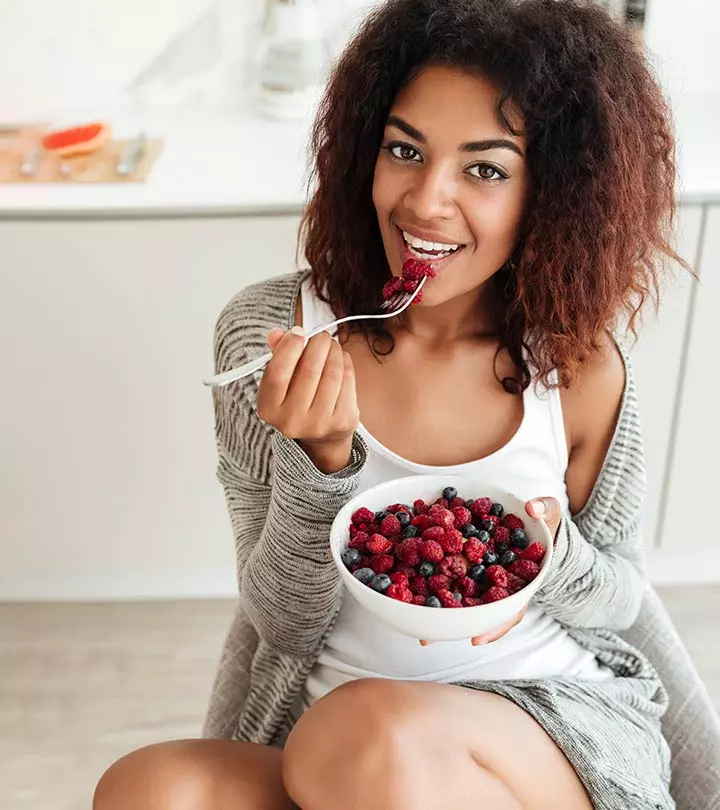

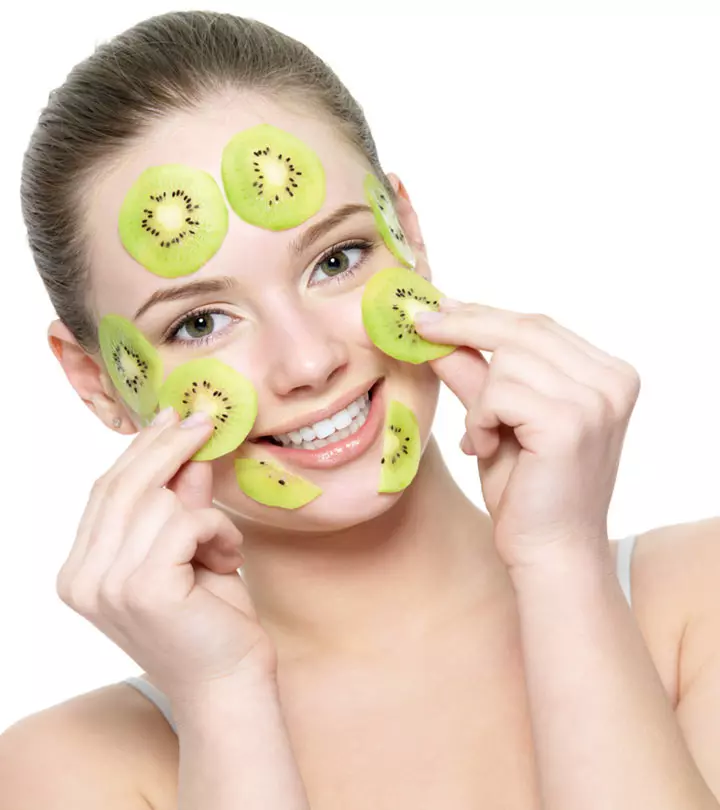

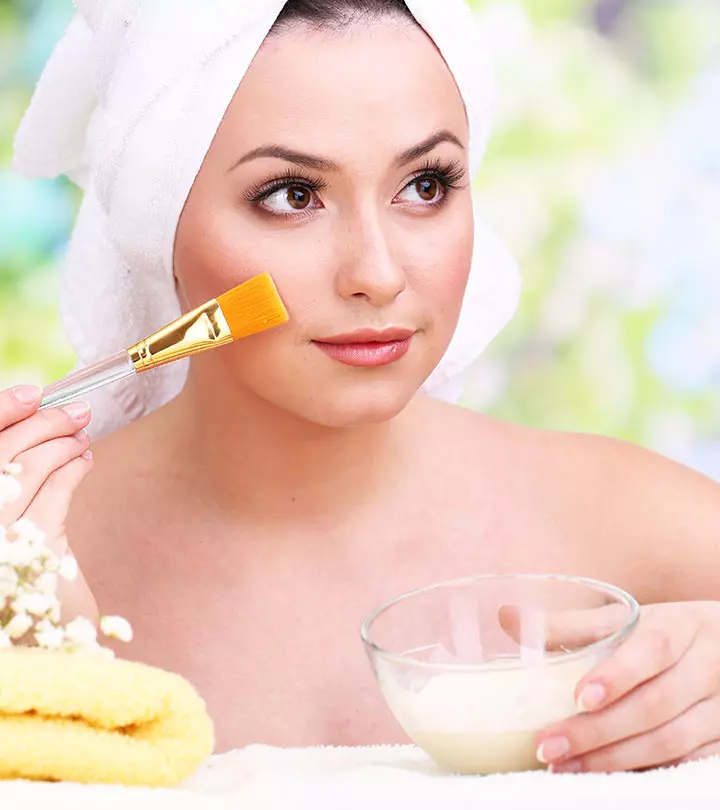




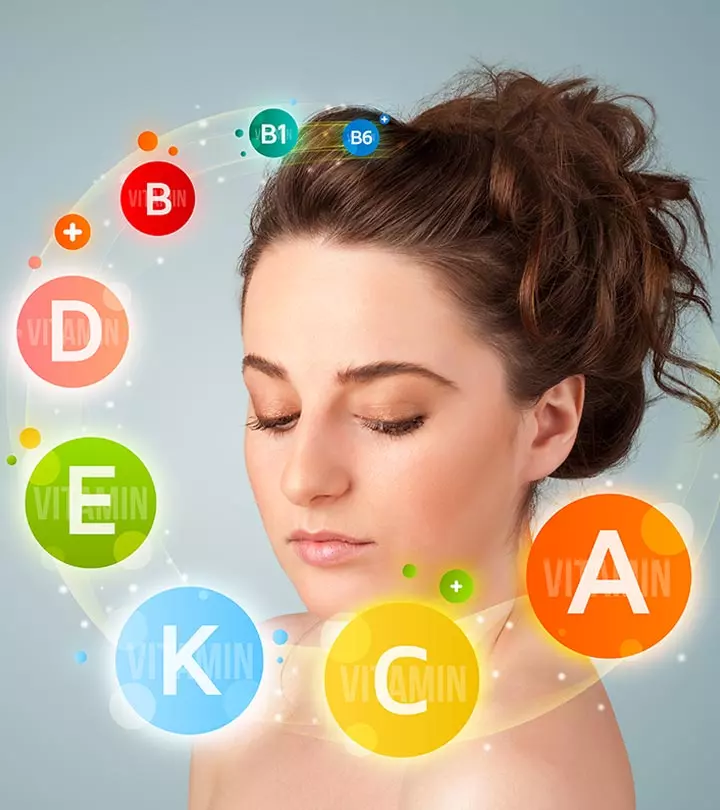
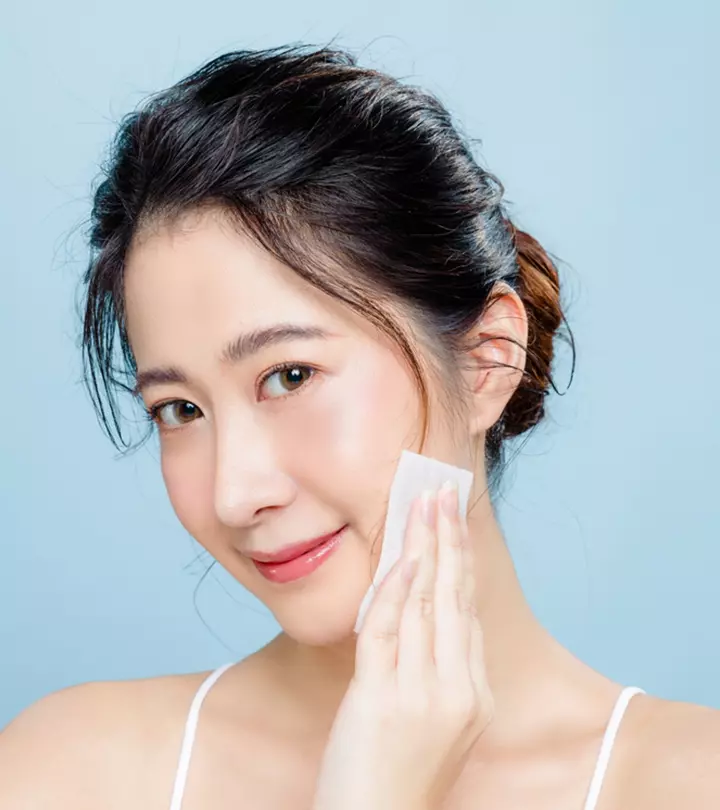

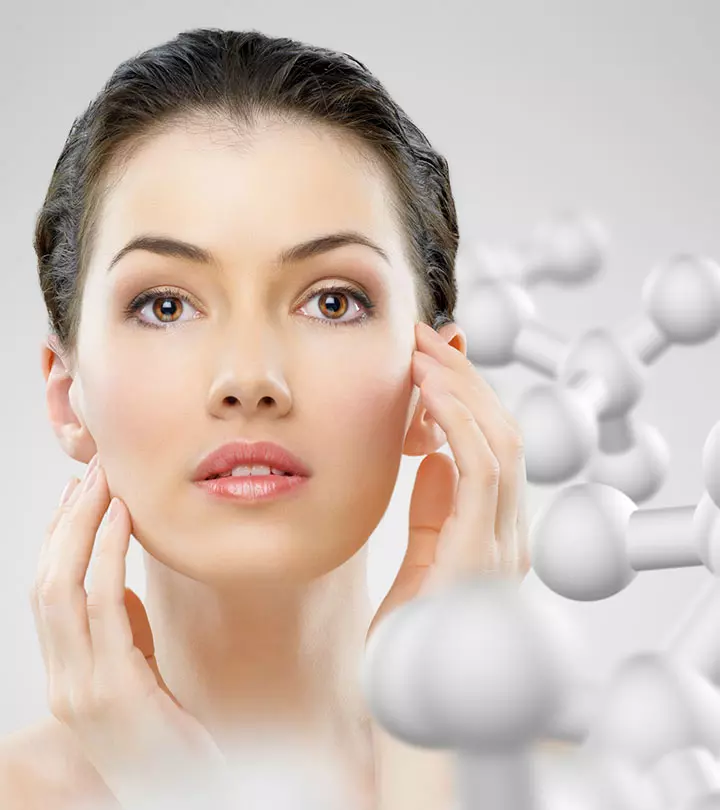


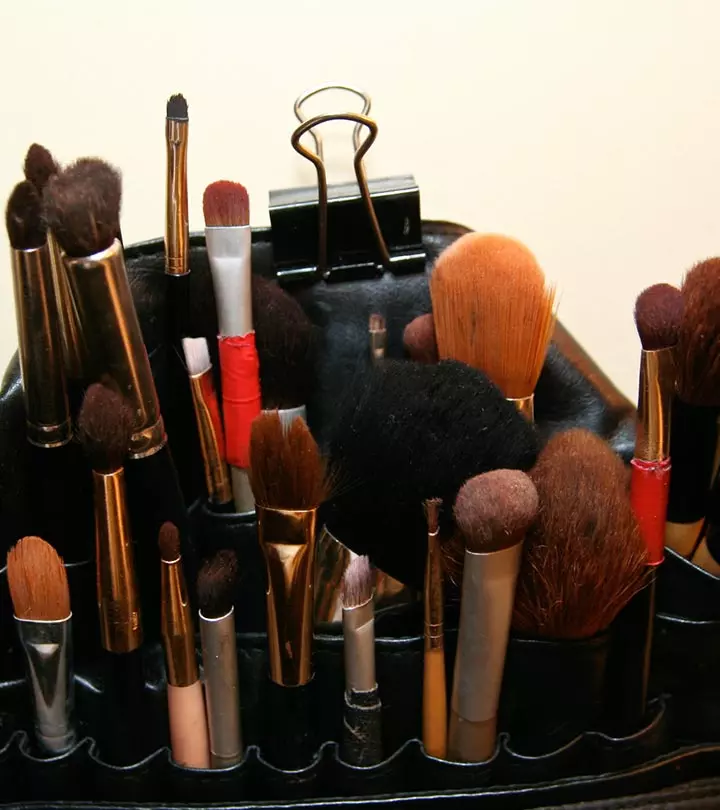


Community Experiences
Join the conversation and become a part of our empowering community! Share your stories, experiences, and insights to connect with other beauty, lifestyle, and health enthusiasts.